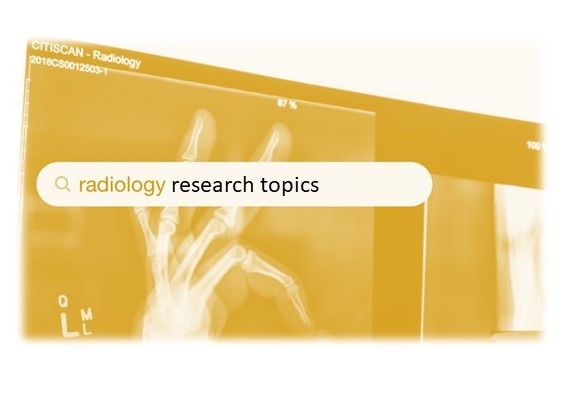1. Revolutionizing Medical Imaging with Computed Tomography
Are you a medical imaging specialist looking to take your imaging capabilities to the next level? Look no further than high-precision computed tomography! Computed Tomography (CT) is an industry-leading medical imaging technology that provides clinicians with essential 3D images to diagnose potential illnesses as accurately as possible.
Using powerful x-ray beams and complex algorithms, CT scans create detailed internal images with far better resolution than most other diagnostic modalities, such as MRI or ultrasound. These highly intricate 3D depictions essentially act like a snapshot of the inner workings when scanning – making it easier for healthcare providers to detect problems related to cardiovascular diseases, cancer, trauma, infections, and soft tissue damage.
2. Gastro-Diagnostics: Taking an X-Ray of your Digestive System
This study will help you dive deep into the depths of your digestive system and take a good hard look at what’s happening inside you. The Gastro-Diagnostic system works safely and quickly to order special equipment for an endoscopy or colonoscopy procedure. This minimally invasive process involves only light anesthesia and is used for diagnostic purposes only — it does not establish any form of treatment.
Once complete, a radiologist will evaluate the results directly from the Imaging center via secure transfer to our facility. They are set up with full training and assistance in reading images securely online. The final diagnosis must be based upon a referral by physicians trained in this field of medical science
- Radiation Revolution: An Inside Look at Diagnostic Radiology
Are you curious to learn more about diagnostic radiology? Well, this is your chance! With this study, you’ll get all the necessary information.
Diagnostic radiology is an advanced imaging technology used in hospitals, clinics, and physician’s offices worldwide. It uses specialized equipment to produce cross-section images of body parts and identify problems that cannot be seen by just taking x-rays. These images are then used to diagnose and treat conditions like cancer, heart disease, stroke, neurodegenerative diseases, musculoskeletal ailments, and more!
Opting for diagnostic radiology instead of traditional x-ray procedure allows doctors to detect subtle changes related to or unrelated health issues much earlier. It enables them to plan suitable treatments accordingly. Moreover, this sophisticated imaging tool provides detailed information about bodily organs, often serving as a guide before undertaking minor or major surgeries.
- Magnifying Medical Miracles with MRI Technology
If you want to make medical miracles happen, it all starts with the right technology. Enter MRI technology – a powerful tool that gives doctors and physicians deep insight into human anatomy so they can effectively diagnose diseases and create successful treatment plans.
MRI stands for Magnetic Resonance Imaging, but we think of it as Major Resolution Imagery. Put simply; an MRI machine helps health care professionals locate problems ranging from fractures in bones to defects inside organs or arteries — something no other device on earth can do quite like this one! Plus, its cutting-edge imaging capabilities let them observe minute details without resorting to invasive surgery – true magnifying magic at work!
- Exploring Ultrasonography Medical Imaging
Ultrasonography is a medical imaging technology that creates images of inside organs and structures by using high-frequency sound waves. It is commonly used to assess the health of a fetus during pregnancy and diagnose and monitor conditions such as heart disease, cancer, and kidney stones. Examples include obstetric ultrasound for pregnant women and echocardiography for assessing heart health.
This cutting-edge medical imaging technology has revolutionized how medical professionals view the body’s inner workings. With ultrasonography, you can view organs, tissues, and even unborn babies with unparalleled clarity and detail.
- Role of RADS in Radiology
RADS stands for Radiology Assessment Database System. It is a system used by radiologists to store, manage, and analyze medical imaging data. Examples of popular RADS systems include PACS (Picture Archiving and Communication System) and RIS (Radiology Information System).
RADS also has powerful analytical tools that help you get the most out of your imaging datasets. It enables you to monitor patient outcomes, analyze diagnostic accuracy, and detect trends in image quality across your practice or institution. In addition, RADS includes a variety of reporting tools that let you generate custom reports and track results over time.
- Deciphering Exposure Indicators through Radiology
Exposure Indicators in Radiology are measurements used to determine the amount of radiation exposure a patient has received during a radiological procedure. Examples of popular exposure indicators include the dose-area product (DAP) and the computed tomography dose index (CTDI). The DAP is a measure of the total radiation dose delivered to a patient during an imaging procedure. At the same time, the CTDI is a measure of the radiation dose delivered to a specific region of the body.
These indicators are incredibly accurate and reliable, precisely measuring the radiation dose a patient receives during a radiological procedure. With this information, you can ensure your patients get the required dosage without exceeding it.
- Focal Spot/Area/Zone: Radiology
Do you want to get the most out of your radiology exams? This study will help you a lot!
Focal Spot/Area/Zone is a term used in radiology to refer to the area of the body that is being imaged. It is the area where the X-ray beam is focused and is usually the size of a pinhead. Popular examples include mammograms, which focus on the breast tissue, and CT scans, which focus on the head or chest.
Focal Spot/Area/Zone also provides safety benefits. With its pinpoint accuracy, radiation exposure time is limited and helps limit exposure to x-ray radiation. As a result, fewer images must be taken to get the desired results, reducing the risk to your patients.
- An Exploration of Contrast Medium
A contrast medium is a material that is used to improve the visibility of organs, vessels, and tissues during medical imaging procedures. The procedures include X-ray, computed tomography (CT), magnetic resonance imaging (MRI), and ultrasound. Popular examples of contrast media include barium sulfate for X-rays, gadolinium for MRI, and microbubbles for ultrasound.
Contrast medium helps in aiding quick diagnosis as it improves the accuracy and effectiveness of medical imaging procedures. The contrast medium lets your doctor get a detailed image for a great diagnosis. It also helps in warning about potential danger signs that may not be visible through standard imaging procedures.
Another advantage of using a contrast medium for medical imaging is its safety. It is FDA approved and noted to be safe for human usage.
10. A Clear Look at Mammography
A mammogram is a type of imaging test that uses low-dose X-rays to detect changes in the breast tissue. It is used to screen for and diagnose breast cancer and other conditions, such as cysts or benign tumors. Mammograms can also be used to monitor the progress of treatment for breast cancer.
Mammography involves squeezing the breasts between two plates and capturing an X-ray picture. This compression helps to spread out the breast tissue so that any abnormalities can be more easily seen on the X-ray image. The images are then sent to a radiologist, who will interpret them and report back with their findings.
11. A Guide to Abdominal Radiography
Abdominal radiography is an imaging technique used to view the internal organs and structures of the abdomen. It involves taking X-ray pictures of the abdomen, which can help diagnose various conditions such as gallstones, appendicitis, ulcers, hernias, and tumors. Abdominal radiography is also used to assess the abdominal organs’ health and monitor treatments such as chemotherapy or radiation therapy.
Whether you’re taking precautions or not sure what’s happening inside, abdominal radiography helps you and your doctor gain valuable insights into the health of your abdominal organs and provides an actual window into exactly what treatments — like chemotherapy or radiation therapy — are doing to make you feel better.
12. Marker Types – Nodules, Lesions, and Tumors:
Introducing the most comprehensive marker types – Nodules, Lesions, and Tumors! These markers provide a fast, easy and accurate way to identify different types of tissue changes with medical imaging and biopsy techniques.
Nodules are solid lumps that can form in any part of the body. They can be easily detected through CT, MRI, and ultrasounds. Lesions are an area of abnormal tissue caused by injury or disease. This can range from skin lesions such as moles and warts to brain lesions such as tumours. Finally, tumours are abnormal masses of tissue that can be either benign or malignant. Popular examples include breast cancer tumors and brain tumors
13. Exploring the Anatomy of Structures
Calling all curious learners who are interested in understanding the anatomy of structures! Explore the Skull, Chest Cavity, and Spine to satisfy your need for knowledge.
Learn the ins and outs of the Skeletal System by getting a closer look at these components. Start by delving into the Skull, the bony structure that houses and protects the brain – found in humans, cows, and other mammals. Then shift your focus to understanding the Chest Cavity and how it holds our most vital organs, like the heart and lungs. Finally, please take a look at the Spine, the column of bones that runs from head to toe and helps us stand and move.
- Exploring Necrosis and Its Effects
It is typically termed cell death which happens when cells are injured, infected, or otherwise destroyed. Necrotic tissue can be identified by its discolouration and the presence of an inflammatory response in the surrounding area. It is important to understand necrosis and its effects, as it can lead to serious health complications if not treated properly.
The process of necrosis begins with cellular damage, which may occur due to physical trauma, radiation exposure, extreme temperatures, toxic chemicals, or infectious agents such as bacteria and viruses. When this damage occurs on a cellular level, enzymes are released from lysosomes within the cell, which causes further destruction of the cell’s structure and membrane integrity.
- Understanding Inflammation and Its Impact
Inflammation is the body’s complicated biochemical response to injuries or illness. It is a natural process that aids in the body’s defence against external invaders such as germs and viruses while also mending damaged tissue. Inflammation can manifest itself in a variety of ways, ranging from modest redness and swelling to severe pain and fever.
While inflammation can be beneficial in some cases, it can also lead to chronic health problems if left unchecked. When inflammation becomes prolonged or excessive, it can damage healthy tissues and organs over time. This type of prolonged inflammation is known as chronic inflammation and may contribute to conditions like heart disease, diabetes, arthritis, asthma, and certain cancers.
- Embracing the Unconventional: Understanding Abnormality
In a world where conformity is often expected, it can be challenging to understand and accept those who are considered “abnormal.” But what does it mean to be abnormal? Abnormality is defined as any behavior or condition that deviates from the norm. This could include physical disabilities, mental health issues, social anxieties, religious beliefs and practices, or having different interests than those around you.
When we think of abnormality in society today, there is an inherent stigma associated with it. People may fear the unknown or feel uncomfortable when confronted with something unfamiliar; this can lead them to judge others without understanding why someone might act differently than they do. So don’t assume that just because someone acts differently than you do means they’re wrong or bad!
- Getting a Circular Look at Radial Angiography
Radial angiography is a medical imaging method that allows you to see the blood arteries in your body. It is commonly used to diagnose and treat coronary artery disease, aneurysms, and vascular malformations. Radial angiography utilizes X-ray images from different angles to create a circular view of the studied vessels. This allows doctors to get a better understanding of the anatomy and pathology of the vessels.
The process begins with an injection of contrast material into the patient’s bloodstream. This material helps to highlight any abnormalities or blockages that may be present in the vessels being studied. The patient is then placed in a special X-ray machine called a C-arm, which rotates around them while taking multiple images from different angles
18. Unlocking the Mysteries of a PET scan
Its full form is Positron Emission Tomography Scan. It is a powerful diagnostic tool used to detect and diagnose diseases in the body. It is a type of imaging test that uses a radioactive tracer to create detailed 3D images of the inside of the body. The tracer is injected into the patient’s bloodstream and then travels through the body. As it moves through organs and tissues, it emits signals detected by a special camera. This information is then used to create an image of the body’s internal structures.
PET scans help us diagnosing cancer, heart disease, brain disorders, and other conditions that affect organ function. They can also be used to monitor how well treatments for these conditions are working.
- An Inside Look at Fluoroscopy
Fluoroscopy in medical imaging employs X-rays to provide real-time pictures of the body. It is used to diagnose and treat a variety of conditions, including cancer, heart disease, and gastrointestinal disorders. Fluoroscopy can also be used to guide minimally invasive procedures such as biopsies and catheterizations.
During a fluoroscopy procedure, the patient lies on an examination table while an X-ray machine passes radiation through the body. A detector plate detects the radiation and displays a picture on a monitor in real time. This allows the doctor to observe the movement of organs or other structures within the body
- “The Not-so-Narrow Tunnel of Stenosis”
The study provides an in-depth look at the stenosis. Stenosis is a medical condition that occurs when a passageway or opening in the body narrows, such as the spinal canal or an artery. This narrowing can cause pressure on nerves and other structures, leading to pain and other symptoms. Many conditions, including age-related wear and tear of the spine, trauma, tumours, infection, and congenital abnormalities, can cause stenosis.
The most common type of stenosis is lumbar spinal stenosis (LSS). LSS occurs when the spinal canal narrows in the lower back area due to degenerative changes in the spine. This narrowing can pressure the nerves that travel through this area of the spine, causing pain and other symptoms.
- A Cross-Sectional Guide to Imaging Speak
Cross-sectional imaging creates a three-dimensional (3D) representation of the body by combining several images obtained from different angles. It diagnoses and monitors diseases, injuries, and other conditions. Cross-sectional imaging can be used to detect tumours, cysts, fractures, and other abnormalities in the body.
When performing cross-sectional imaging, doctors will often use contrast agents such as barium or iodine to help enhance the visibility of certain areas on the scan. Contrast agents are injected into the patient’s bloodstream before scanning so they can be seen more clearly on the scan.
- Bone Densitometry Classification System
Bone densitometry is a medical imaging technique used to measure the density of bones to diagnose and monitor bone diseases. The World Health Organization (WHO) Bone Densitometry Classification System is commonly used for classifying bone density. This approach was created in 1994 and has subsequently been recognized as the gold standard for measuring bone health by several nations.
The WHO Bone Densitometry Classification System uses a four-level scale to classify bone density. The first level, normal, indicates no signs of osteoporosis or other bone diseases. The second level, low-normal, suggests that there may be some signs of osteoporosis but not enough to warrant treatment. The third level, osteopenia, indicates an increased risk of developing osteoporosis and should be monitored closely. Finally, the fourth level, osteoporosis, indicates an advanced stage of bone loss and requires immediate treatment.
23. Unraveling the Mysteries of Computed Radiography
Computed radiography (CR) is a digital imaging technique that captures and stores X-ray images. It is an alternative to traditional film-based radiography, which uses photographic film to capture the image. CR technology has revolutionized the field of medical imaging, providing faster, more accurate results than ever before.
CR works by using a special phosphor plate that is exposed to X-rays. The plate absorbs the X-rays and stores them as an electrical charge. This charge is then scanned and turned into digital data, which may be displayed on a computer monitor or printed for further examination.
- Unlocking the Potential of Intraoperative Radiography
Intraoperative radiography (IORT) is a relatively new imaging technique that has the ability to alter how surgeons approach their profession. This technology allows for real-time imaging during surgery, providing surgeons with unprecedented accuracy and precision. IORT can be used to detect small tumours or other abnormalities that may not be visible to the naked eye, allowing for more precise surgical interventions.
The use of IORT in surgery has been steadily increasing over the past few years as its advantages have become more widely known. It is particularly useful in orthopedic surgeries, where it can help guide the placement of screws and other implants.
- Reimagining Radiography: The Power of Virtual Radiography
Virtual radiography (VR) uses computer-generated images to create detailed 3D models of the body. This allows doctors to quickly and accurately assess a patient’s condition without performing an invasive procedure or taking multiple X-rays. VR also eliminates the need for costly equipment, such as X-ray machines, which can be expensive to maintain and operate.
The use of virtual radiography has already been shown to improve accuracy and reduce costs in many areas of healthcare. For example, it has been used successfully in orthopedic surgery, where it can provide detailed images of bones and joints that are difficult to capture with traditional X-rays. It has also been used in cardiology, which can help identify blockages in arteries without requiring an invasive procedure.
- A Scintillating Look at Scintigraphy
Scintigraphy is a type of imaging technique used to diagnose and monitor various medical conditions. It involves using a radioactive tracer, injected into the body and then detected by a special camera. The camera produces images that can be used to identify areas of abnormal activity in the body, such as tumours or infections.
Scintigraphy has been used for decades to diagnose and monitor diseases such as cancer, heart disease, kidney disease, and thyroid disorders. It can also be used to detect bone fractures or other injuries. In addition, scintigraphy can be used to evaluate organ function and detect abnormalities in blood flow.
- The Science behind Doppler Flow Studies
Doppler flow studies are a type of medical imaging technique used to measure the speed and direction of blood flow in the body. This type of study is based on the Doppler Effect, which is an acoustic phenomenon that occurs when sound waves are reflected off moving objects. The Doppler Effect causes a change in the frequency of the sound waves, which can be detected by specialized equipment.
In medical imaging, Doppler flow studies use ultrasound technology to detect changes in blood flow. Ultrasound waves are sent into the body and bounce off red blood cells as they move through vessels. A transducer then picks up the reflected sound waves and converts them into electrical signals that a computer can analyse.
- Examining the Impact of Nuclear Medicine Studies
Nuclear medicine studies are a sort of medical imaging that employs small quantities of radioactive material to diagnose and cure disorders. Nuclear medicine studies can provide valuable information about the functioning of the body’s organs, bones, and other tissues. They are used to detect cancer, heart disease, kidney disease, and other conditions.
The use of nuclear medicine studies has increased significantly over the past few decades due to technological advances and an increased understanding of their potential benefits. However, there is still some debate about whether they should be used more widely.
- Take a Peek inside Apnea Imaging: A Visual Journey
Apnea imaging is a type of medical imaging that uses specialized techniques to visualize the airways and lungs. It is used to diagnose and monitor obstructive sleep apnea (OSA), a condition in which a person’s breathing stops and starts during sleep. Apnea imaging can be performed using X-rays, computed tomography (CT) scans, magnetic resonance imaging (MRI), or ultrasound.
X-Rays: X-rays are the most commonly used form of apnea imaging. They provide detailed images of the chest and lungs, allowing doctors to identify any blockages or abnormalities in the airway. X-rays are quick and easy to perform, but they provide less detail than other forms of apnea imaging.
- Anatomical Orientation: Coronal, Sagittal, Transverse
Anatomical orientation is a term used to describe the three-dimensional orientation of body structures, organs, and tissues. Medical professionals need to understand anatomical orientation to diagnose and treat patients accurately. The three main orientations are coronal, sagittal, and transverse.
The coronal orientation is referred to as a plane that divides the body into anterior (front) and posterior (back) parts. This plane runs from side to side, perpendicular to the body’s long axis. In this orientation, structures are viewed as if looking at them from the front or back.
Sagittal orientation describes a plane that divides the body into left and right halves. This plane runs from head to toe along the body’s long axis. In this orientation, structures are viewed as if looking at them from the side.
Transverse orientation describes a plane that divides the body into upper and lower sections. This plane runs across the body’s width, perpendicular to both coronal and sagittal planes. In this orientation, structures are viewed as if looking at them from above or below.
- Seeing Through the Mysteries of Radiopaque Materials
Radiopaque materials are substances that can be seen on X-ray imaging. These materials are used in a variety of medical and industrial applications, from diagnosing medical conditions to inspecting the integrity of pipelines. Radiopaque materials have unique properties that make them invaluable for these purposes, but what exactly makes them so special?
At its most basic level, radiopacity is the ability of a material to absorb X-rays and appear opaque on an X-ray image. The atomic structure of the material determines this property; some elements are naturally more radiopaque than others. For example, iodine is one of the most radiopaque elements, while carbon is relatively transparent to X-rays.
The most common type of radiopaque material used in medical imaging is barium sulfate. Barium sulfate has a high atomic number and therefore absorbs X-rays very well.
- Exploring Paracentric Radiation Therapy
Paracentric radiation therapy is a type of external beam radiation therapy used to treat cancer. It is a specialized form of radiotherapy that uses multiple beams of radiation from different angles to target the tumour while sparing surrounding healthy tissue. This technique has been used for many years in treating various types of cancer, including prostate, breast, lung, and head and neck cancers.
The paracentric approach utilizes several beams of radiation focused on the tumour from different angles. This allows for more precise tumour targeting while minimizing damage to nearby healthy tissue. The beams can be directed to varying depths within the body, allowing for more effective treatment of tumours located deep within the body.
- Achieving Optimal Clarity with Isotropic Resolution
Isotropic resolution refers to the ability of an imaging system to capture images with equal resolution in all directions. This means that the image will have the same level of detail regardless of the orientation or angle from which it is viewed.
The most common way to achieve isotropic resolution is through the use of multiple cameras, each capturing a different angle of view. By combining these images, a single image can be created that has equal detail in all directions. This technique is often used in medical imaging, allowing doctors tto understand better what they are looking at and make more accurate diagnoses.
- Taking a Closer Look at the Future of Tomosynthesis Scanning
Tomosynthesis scanning is a revolutionary imaging technique that has the potential to revolutionize medical diagnosis. This technology uses X-ray beams to create three-dimensional images of the body, allowing doctors to see more detail than ever before. Tomosynthesis scanning has already been used in mammography and is now being explored for use in other areas of medicine, such as orthopedics and cardiology.
Tomosynthesis scanning can also be used to detect diseases or conditions that may not appear on traditional X-rays. For example, tomosynthesis scans can detect small lesions or calcifications that may indicate breast cancer before they become visible on standard mammograms.
- Multiplanar Imaging: An Innovative Take on Diagnostics
Multiplanar imaging is an innovative approach to medical diagnostics that has revolutionized the way doctors and radiologists view and interpret images of the body. This technique combines multiple imaging modalities, such as MRI, CT, and ultrasound, to create a three-dimensional (3D) representation of the body’s anatomy. It allows for more accurate diagnosis and treatment planning by providing a comprehensive view of the patient’s condition.
The multiplanar imaging technique was first developed in the early 2000s to improve diagnostic accuracy and reduce radiation exposure. Multiplanar imaging is beneficial for diagnosing complex conditions such as cancer or heart disease. For example, it can help doctors determine if a tumour is malignant or benign by providing detailed information about its size, shape, and location within the body.
- Getting Radial: A Guide to Mastering Imaging Algorithms
Radial imaging algorithms are a powerful tool for medical professionals, allowing them to quickly and accurately diagnose a wide range of conditions. Radial imaging algorithms use mathematical equations to create images from data collected by medical devices such as MRI scanners or ultrasound machines. These images can then be used to diagnose diseases, detect abnormalities, and monitor the progress of treatments.
Radial imaging algorithms are based on the concept of “radial symmetry” – the idea that an object can be rotated around its center point without changing its shape or size. This allows medical professionals to take multiple images from different angles and combine them into one image that shows the entire object in detail. This is especially useful for diagnosing complex conditions such as tumors or heart defects, where multiple angles may be needed to get an accurate picture.
- Getting to the Core of Molecular Imaging
Molecular imaging is a rapidly growing field of medical science that has the potential to revolutionize the way we diagnose and treat diseases. Molecular imaging is a type of imaging technology that uses specialized techniques to visualize and measure molecular processes in living organisms. It is used to detect and monitor changes in biological systems at the molecular level, allowing for more accurate diagnosis and treatment of diseases.
Molecular imaging can study various biological processes, such as gene expression, protein synthesis, cell metabolism, and drug delivery. It can also be used to detect changes in tissue structure or function due to disease or injury. By providing detailed information about the underlying biology of a disease, molecular imaging can help physicians make more informed decisions about diagnosis and treatment.
- Exploring the Potential of Teleradiology Systems
Teleradiology systems are becoming increasingly popular in the medical field as they offer several advantages over traditional radiology services. Teleradiology is the practice of sending images and other medical data from one location to another via electronic means. This technology has revolutionized how radiologists can care for patients, allowing them to access imaging studies from any location with an internet connection.
Additionally, teleradiology systems allow for faster diagnosis and treatment decisions due to their ability to transmit images quickly between multiple locations. This can be especially beneficial in emergencies where time is of the essence.
- Computer Assisted Diagnosis (CAD) in Radiology
Computer Assisted Diagnosis (CAD) in radiology is a rapidly growing field of medical imaging technology. It involves using computer algorithms to analyze medical images and provide diagnostic information to radiologists. CAD systems are designed to detect abnormalities in medical images, such as tumours or lesions, and can be used to assist radiologists in making more accurate diagnoses.
Advances in computer technology and artificial intelligence have fueled the development of CAD systems (AI). AI algorithms are used to analyze medical images and identify patterns that may indicate an abnormality. These algorithms can also be trained on large datasets of medical images to improve their accuracy over time.
- Exploring New Radio-Pharmaceutical Drugs to Improve Care
The development of new radio-pharmaceutical drugs has been a major focus of medical research in recent years. Radio-pharmaceutical drugs are pharmaceuticals that contain radioactive elements, which allow them to be used for diagnostic and therapeutic purposes. These drugs can be used to diagnose diseases such as cancer, heart disease, and neurological disorders and treat certain conditions.
Radiopharmaceuticals have the potential to transform healthcare delivery by enabling more accurate diagnostic and treatment choices. For example, they can be used to detect cancer at an earlier stage than traditional imaging techniques, allowing for earlier intervention and improved outcomes. They can also target specific body areas with radiation therapy or chemotherapy, reducing side effects and improving patient comfort.
- Developing Protocols for Diagnostic Procedures and Interventions
Interoperability solutions for radiology involve the use of standards-based protocols and technologies to enable the sharing of medical images, patient records, and other data between different systems. This includes both hardware and software components, such as image viewers, digital archiving systems, and communication networks. Using these solutions, radiologists can access patient information from any location to make informed decisions about diagnosis and treatment.
One example of an interoperability solution for radiology is the Digital Imaging Network Architecture (DINA). DINA is a set of standards developed by the American College of Radiology (ACR) that enables the secure exchange of medical images between different systems. It also supports various imaging modalities, including X-rays, CT scans, MRI scans, ultrasound, PET scans, and nuclear medicine scans.
42. Spectroscopy: An Introduction to the Science of Spectra
Spectroscopy is a powerful analytical technique used to identify and quantify the chemical composition of a sample. It works by measuring the interaction between electromagnetic radiation and matter, which can be used to determine the structure, composition, and physical properties of a material. Spectroscopy is widely used in many fields, such as chemistry, physics, astronomy, medicine, and engineering.
Spectroscopy involves the use of light or other forms of electromagnetic radiation to measure the energy levels of atoms or molecules in a sample. This information can then be used to determine the chemical composition and structure of the sample. The type of spectroscopic technique used depends on the type of radiation being measured (e.g., visible light, infrared light, ultraviolet light) and what kind of information is desired from the sample (e.g., molecular structure or elemental composition).
43. Nomenclature of X-Ray Imaging Tracers
X-ray imaging tracers are substances used to visualize and diagnose medical conditions. They are usually given intravenously and identified using X-ray imaging techniques like computed tomography (CT) or fluoroscopy. The nomenclature of these tracers is important for accurate diagnosis and treatment.
Tracer nomenclature is based on the type of atom that is being imaged. For example, an “iodine” tracer would contain iodine atoms, while a “barium” tracer would contain barium atoms. Other common elements in X-ray imaging tracers include gadolinium, technetium, and thallium.
The name of the tracer also includes information about its chemical structure. For example, a “diethylenetriaminepentaacetic acid” (DTPA) tracer contains five carboxylic acid groups attached to an amine group. This type of tracer is often used to image kidney function because it binds strongly to certain metals in the body, such as calcium and iron.
44. Exploring Effective Radiation Therapy Processes
Radiation therapy is a type of cancer treatment in which high-energy radiation is used to destroy cancer cells. It is a successful treatment for many forms of cancer, and it can be used alone or in conjunction with other therapies, including surgery and chemotherapy. The radiation therapy process involves several steps, from the initial consultation to the completion of treatment.
Consultation with a radiation oncologist is the first step, who will assess the patient’s condition and determine if radiation therapy is an appropriate treatment option. During this consultation, the doctor will discuss the risks and benefits of radiation therapy and any potential side effects.
The next step in the process is a simulation, which helps create a 3D image of the tumor so doctors can accurately target it with radiation beams during treatment. During simulation, patients are asked to lie still on a table while images are taken from multiple angles using X-rays or CT scans. This information is then used to create a 3D model of the tumor so that doctors can precisely direct radiation beams at it during treatment sessions.
Once the simulation has been completed, patients begin their actual course of radiation therapy treatments. These treatments typically last between 10-30 minutes each day for several weeks, depending on the type and severity of the cancer being treated. During each session, patients lie still on a table. At the same time, beams of high-energy X-rays are directed at them from multiple angles using sophisticated machines called linear accelerators (or LINACs).







